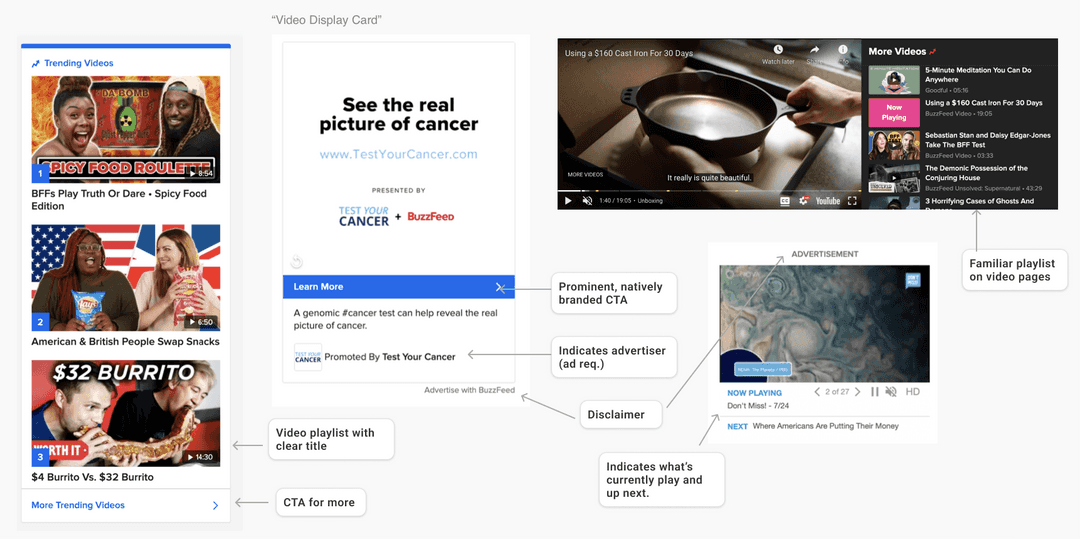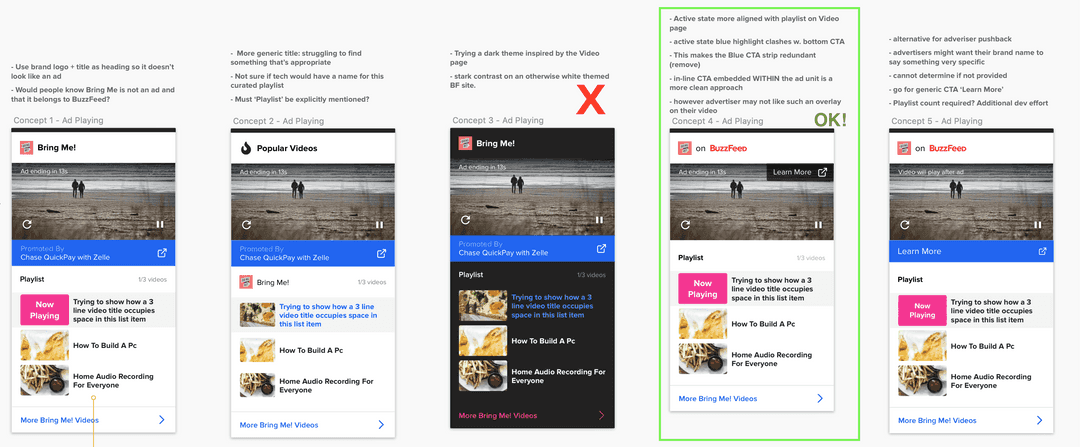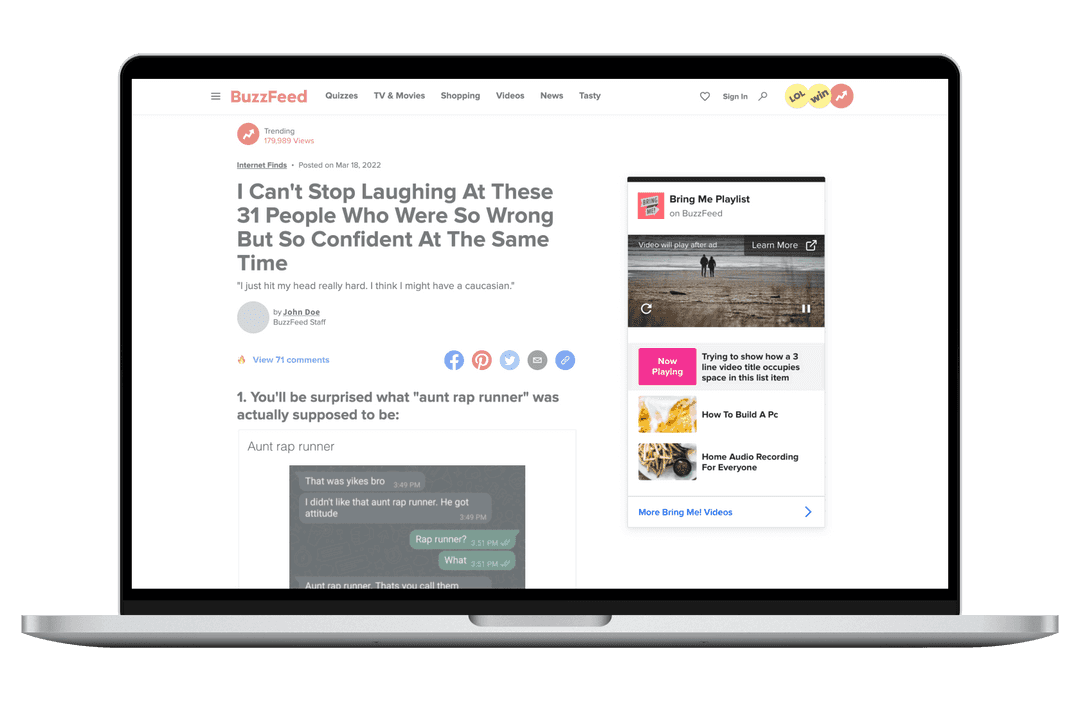Playlist ad unit
A video ad experience for BuzzFeed.com

Overview
Our advertisers needed to drive more views to their video ads. However, we did not want to simply increase the number of video ads on the site at a time when we were focused on increasing consumption of our native video content.
As part of the AdTech team, we recognized that there is an opportunity to meet both business and editorial needs. I helped develop a new ad product that allows advertisers to serve ads in front of a collection of editorial videos.
KPIs
- Video ad completion rate - Would users watch the entire video ad? Could it meet the industry average of ~70%?
- Editorial video views - Do users watch/interact with native video content?
Constraints
- To make this unit easy to sell, we only require clients to provide a video asset (mostly 16:10 videos)
- The sidebar is the most optimal spot for unit viewability
- Unit cannot be taller than the smallest desktop viewport (to ensure video visibility)
- Desktop was our primary focus
Design goals
How might we
- Incentivize people to watch the video ad and content?
- Indicate this is primarily not an ad unit?
- Inform users what (actual) video they’re going to watch?
Approach
Visual Audit
To really communicate that this video unit largely serves native video content, it had to rely on existing patterns for familiarity — I looked into existing units on BuzzFeed.com that recommend content
Low-fidelity flows
Unlike simpler, image-only ads, this hybrid unit had 3 key states to account for
- Loading – the duration in which we fetch videos in the playlist and the advertiser's video
- Preroll - when the advertiser's video plays
- Video playback - when the actual (editorial) videos play
Legal requirements such as indictating what's an ad and who the advertiser were also important to consider here. However, the video ad only plays first for a few seconds and then goes away. After that, the unit only recommends native content.
Visual explorations
With a clear understanding of how the unit would behave, I started to explore visual design. I also needed to address concerns around elements that evoked an 'ad-like' feeling.
Some thoughts I kept in mind:
- Prevent miscommunicating that all the video content is here from the advertiser
- Clarify whose video is being recommended by highlighting the brand
- Lean into existing patterns to improve unit's familiarity - the playlist on the videos page and YouTube playlists are very recognizable
- Provide a way to link out to the advertiser without visually overpowering the entire unit
The unit's design was close to completion. After sharing more widely with the team stakeholders, engineers and other designers, we had the following thoughts:
- "Ad ending in 13s" could be prone to technical errors and may not be accurate — aim is to tell users 'a video will play after the ad' so the timer isn't crucial
- Maintaining a playlist count requires additional dev effort — if the list is small enough, we may not need a count
- The title could be more clear to communicate 'this is a playlist that offers video content from a brand by BuzzFeed' - leaning into brand logo as identifier
Final design
By taking feedback into account and with some visual refinement, the team and I collectively arrived at this solution.
We felt this was best suited to meet our goals because
- Unit fits natively within editorial content
- is not intrusive to user's consumption experience
- clearly highlights the video brand
- persistent placement in sidebar is expected to generate high performing ad metrics
Prototype
Outcome
Immediately after launch, we saw promising results.
- Video ad completion rate exceeded our expectations by 20% - saw a 90% completion rate on desktop
- Generated significant monthly revenue without negatively impacting usability
- Mobile site suffered with a less than 29% completion rate - this was expected because mobile was not in scope and the unit was at the bottom of the page
- While we effectively promoted all our internal video content, we did not see a significant increase in its consumption
Given the high completion rate, significant revenue and no negative impact on usability metrics, the playlist ad unit became a mainstay on BuzzFeed.com.





